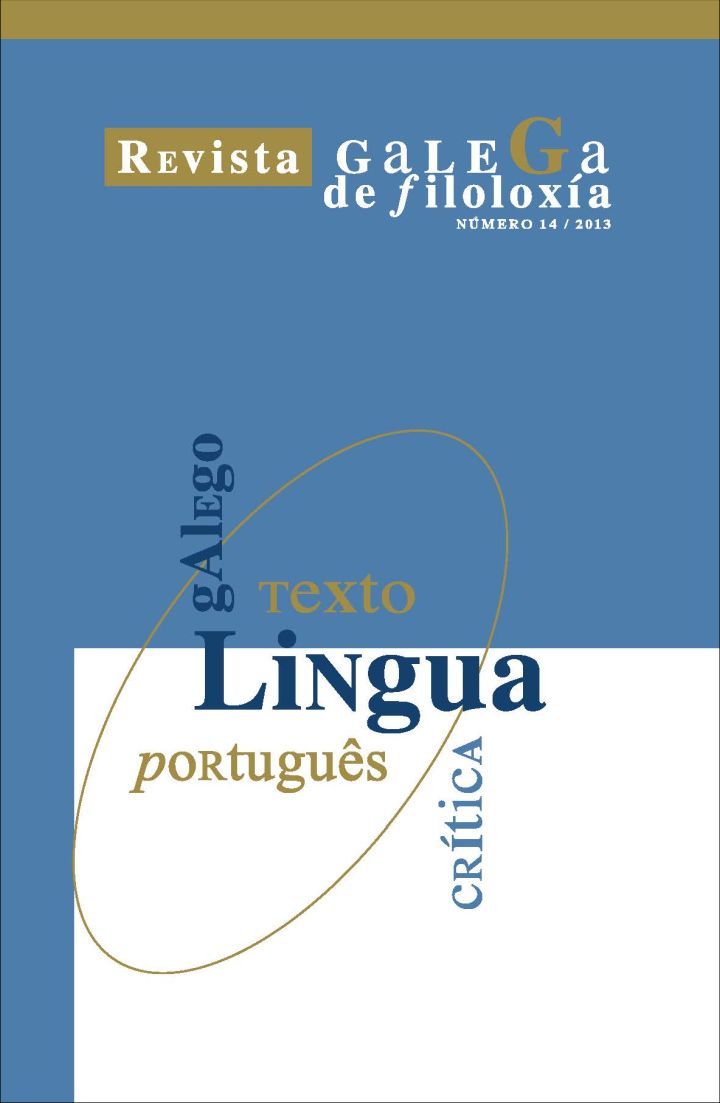Electronic discourse: communicative interaction in virtual space
Main Article Content
Abstract
This paper examines the characteristics of electronic communication, a new means of interaction furthered by the advance of computer engineering and the Information and Communication Technologies, which enables people to exchange information in a synchronous or asynchronous mode, regardless of their physical location. In particular, we will focus our attention on the discursive properties of these new systems, which share traits with writing and speaking, but also have idiosyncratic elements (communication in absentia, simultaneous virtual presence, textual persistence etc.) as a result of the characteristics of the medium that contains them. These data allow us to affirm that we are facing a new mode of communication, independent of the oral and written mode and specific from Virtual Space.
Keywords:
Downloads
Metrics
Article Details
References
Akinnaso, F. N. (1982): “On the differences between spoken and written language”, Language and Speech 25 (2), 97-125.
Álvarez Martínez, A. (2008): Interacciones sincrónicas escritas en línea y aprendizaje del español: caracterización, perspectivas y limitaciones. Tese de doutoramento. Dispoñíbel en http://www.galanet.eu/publication/fichiers/Alvarez2008_tesis.pdf. Consultado en 31/01/2012.
Baron, N. S. (2000): Alphabet to email (Londres e Nova York: Routledge).
Bays, H. (2004): “Temporalité en Internet Relay Chat: le rythme du discours électronique”, Colloque internacional sur “La comunication électronique: Approches linguistiques et anthropologiques” (École des Hautes Études en Sciences sociales: Paris).
Bedmar, M. J. (1989): “La norma del texto oral y la norma del texto escrito”, Revista Española de Lingüística 19 (1), 111-120.
Blanco Rodríguez, M. J. (2002): “El chat: la conversación escrita”, Revista de lingüística aplicada 16, 43-88.
Bustos Tovar, J. J. (1997): “Organización textual y oralidad”, Quaderns de Filologia IV, 7-24.
Cassany, D. (2000): “De lo analógico a lo digital. El futuro de la enseñanza de la composición”, Revista Latinoamericana de Lectura 21. Dispoñíbel en http://www.unne.edu.ar/institucional/documentos/lecturayescritura08/cassany.pdf. Consultado en 19/09/2011.
Castells, M. (2001): La Galaxia Internet: Reflexiones sobre Internet, empresa y sociedad (Madrid: Areté).
Chardenet, P. (2004): “Échanges plurilingües en ligne: à la recherche de l’objet du discours”, Les caders du Cediscor 8, 57-73.
Compaine, B. M. (2001): The Digital Divide. Facing a crises or creating a myth? (Cambridge, Massachusetts: The MIT Press).
Crystal, D. (1995): The Cambridge encyclopedia of English language (Cambridge: Cambridge University Press).
Crystal, D. (2004): Language revolution (Cambridge: Polity).
Crystal, D. (2006): Language and the Internet (Cambridge, UK; New York: Cambridge University Press).
Crystal, D. (2011): Internet Linguistics: a student guide (Abingdon, Oxon, New York: Routledge).
Davis, B. / Brewer, J.P. (1997): Electronic discourse: linguistic individuals in virtual space (Albany: State University of New York Press).
Erickson, T. (1999): “Persistent conversation: an introduction”, Journal of Computer Mediated Communication 4 (4). Dispoñíbel en http://www.ascusc.org/jmc/vol4/issue4/ericksonintro.html. Consultado en 11/02/2012.
Fiormonte, D. (2003): Scrittura e filologia nell’era digitale (Milano: Bollati Boringhieri Editore).
Freixeiro Mato, X. R. (2006) [2003]: Gramática da lingua galega. IV Gramática do texto (Vigo: A Nosa Terra).
Halliday, M. A. K. (1985): Spoken and Written Language (Londres: Arnold).
Herring, S. C. (1999): “Interactional Coherence in CMC”, Journal of Computer-Mediated Communication 4, 4. Dispoñíbel en http://www.ascusc.org/jcmc/vol4/issue4/herring.html. Consultado en 16/01/2012.
López Alonso, C. (2002): “El texto electrónico en el aprendizaje de las lenguas” Congreso Internacional de Análisis del discurso: lengua, cultura, valores, (Universidad de Navarra).
López Viñas, X., & Lourenço Módia, C., &Moreda Leirado, M. (2010): Gramática práctica da lingua galega. Comunicación e expresión (A Coruña: Baía).
Mayans, J. (2002): “De la incorrección normativa en los chats”, Revista de investigación lingüística 2 (V), 101-116. Dispoñíbel no ARQUIVO do observatorio para a Cibersociedade en: http://www.cibersociedad.rediris.es/archivo/articulo.php?art=28. Consultado en 15/04/2011.
Millard, W. (1996): “I flamed Freud: a case study in teletextual incendiarism”, en Porter, D. (ed.): Internet Culture, 149-159 (Nova York, Londres: Routledge).
Ochs, E. (1979): “Planned and unplanned discourse”, en Givon, T. (ed.): Syntax and Semantics. Vol. 12: Discourse and Syntax, 51-80 (Londres: Academic Press).
Oesterreicher, W. (1996): “Lo hablado en lo escrito. Reflexiones metodológicas y aproximación a una tipología”, en Kotschi, T. / Oesterreicher, W: / Zimmermann (eds.): El español hablado y la cultura oral en España e Hispanoamérica. (Frankfurt am Maim, Vertvuert Verlag: Biblioteca Ibero-americana).
Payrató, Ll. (1996): Català col·loquial. Aspectes de l’ús corrent de la llengua catalana (Valencia: Universitat de València).
Romero, D. / Vaquero, I. (2001): Da periferia á rede (Vigo: Xerais).
Sacks, H. / Schegloff, E. A. / Jefferson, G. (1974): “A simplest systematics for the organization of turn-taking for conversation”, Language, 696-735.
Torres i Vilatarsana, M. (2000): “Anàli del Discurs Mediatitzat per Ordenador”, I Jornada sobre Comunicació Mediatitzada per Ordinador en Catalá (CMOCat) (Barcelona: Universitá de Barcelona).
Vela Delfa, C. (2005): El Correo Electrónico: El nacimiento de un nuevo género (Madrid: Universidad Complutense de Madrid). Dispoñíbel en http://www.galanet.eu/publication/fichiers/tesis_cristina_vela_delfa.pdf. Consultado en 05/05/2011.
Walther, B. (1996): “Computer.Mediated Communication: Impersonal, Interpersonal and Hyperpersonal Interaction”, Communication Research 23 (1), 3-43.
Werry, C. C. (1996): “Linguistic and International Features of Internet Relay Chat”, en Herring, S. (ed.): Computer-Mediated Communication: Linguistic, Social and Cross-Cultural Perspectives, 47-63 (Amsterdam: John Benjamins).
Yabuuchi, A. (1998): “Spoken and written discourse: What’s the true difference?”, Semiotica 120, 1/2, 1-37.
Young, J.R. (1994): “Textuality in ciberspace: MUDs and written experience”, en Eserver (Collections in the Arts and Humanities).
Yus, F. (2001): Ciberpragmática (Barcelona: Ariel).



